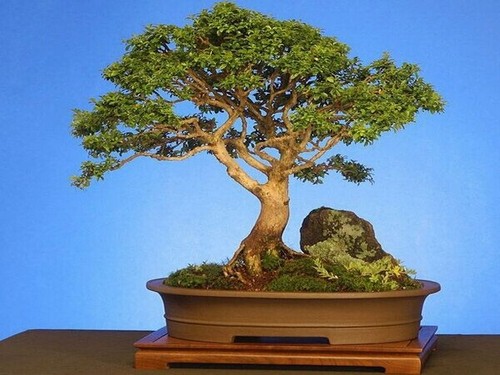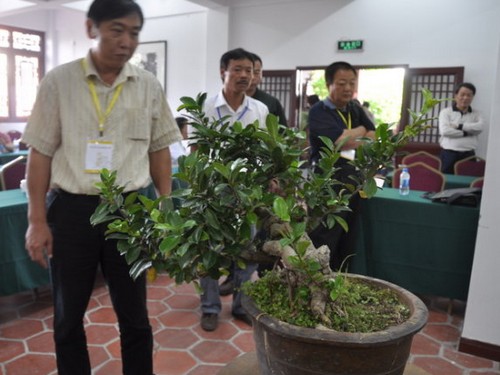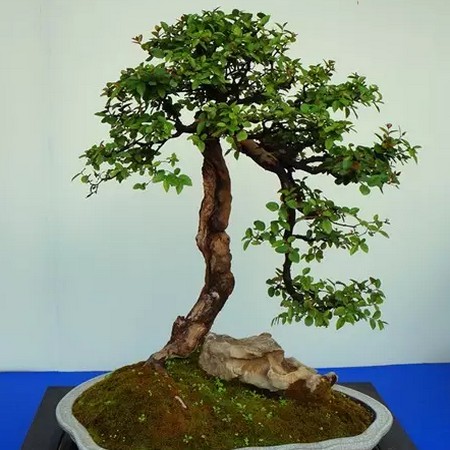Bonsai creation: insipid and strange, combining strength with softness
Insipid and peculiar are two different artistic styles and artistic expressions. In bonsai art, some works win by surprise, such as Qifeng, Qishi, strange trees, strange flowers, and so on, which are relatively easy to see, while some works seem ordinary, but in fact, they can make the viewer eat olives and have endless aftertaste. This is also a kind of wonder, a wonder in the middle of the world, and it can only be discovered by looking up and observing. Therefore, bonsai art can neither be too ordinary nor too strange.

Too ordinary and uninteresting, too strange and unnatural. At the same time, strange must have the basis of life and natural basis, should be unexpected, but all in the reasonable, it often exists in the ordinary, need in-depth exploration and careful observation can be found. Therefore, it is necessary to have a solid foundation of life, and we must make a detailed and in-depth observation of nature. This is what the painter Shi Tao said: search Qifeng to make drafts, and at the same time have profound artistic accomplishment and skillful performance skills. To know that strange is by no means absurd and weird, but must conform to the laws of nature and be convincing. In addition, there is a wonder in Pingzhong, which means that the ordinary and ordinary material has been transformed into a new artistic image through artistic processing.
In the scenery of nature, there are not only majestic and precipitous peaks, but also winding rivers; both vigorous and straight pines, but also graceful weeping willows. This is the dialectical relationship between strength and flexibility. In bonsai art, rigidity and softness are reflected in the theme and artistic style of the works, as well as the shape, texture and lines of the scenery. It just happens to be soft, so we can't generalize. As far as the subject matter of the works is concerned, they are both rigid and soft, each with their own advantages, just like the vigorous school and the graceful school in Chinese literature of a hundred generations. However, as far as the artistic shape of the work is concerned, the rigid should not be blindly rigid, but there should be softness in the rigid; the gentle should not be blindly soft, but there should be rigidity in the softness, so that there can be change and contrast. The stone avalanche makes the rigid more rigid, and the soft more gentle.
The rigid and soft relationship in the stump bonsai is mostly reflected in the relationship between the main branch and the trumpet branch, between the hard horn of the branch and the soft orphan, and between the stone and the tree. Generally speaking, the main branches are rigid, while the Sichuan branches are soft; the hard corners are rigid, while the soft orphans are soft; the stones are mostly rigid, while the trees are soft. In the vigorous pine trees, the artistic whole of the combination of rigidity and softness is usually achieved through the turning of branches. In the landscape bonsai, the combination of rigidity and softness is also reflected in many aspects. Mountains and water are rigid and soft, while stones and trees are a rigid and soft contradictory entity.
Time: 2019-05-23 Click:
- Prev

The coverage of proportion in the process of bonsai pile landscape modeling
Bonsai art proportion is appropriate and harmonious, giving people pleasure, so as to obtain aesthetic pleasure; on the contrary, it is difficult to evoke aesthetic resonance. Bonsai shrinks into inches and the inches and feet in the mountains and rivers tell us clearly that there are proportional aesthetic factors in it. Scale is a big concept for pile scene modeling.
- Next

Bonsai creation: dynamic and dynamic contrast, balanced and appropriate
The so-called momentum is to embody the spirit and pay attention to the problems of liveliness, momentum and balance. When creating bonsai, we must pay attention to momentum and balance, so as to give full play to the internal strength of the scene. Of course, this paspalum power is the infusion of the author's thoughts, feelings, ideals and wishes. If you ignore the momentum, the potential will stir up a lot of dead things.
Related
- Fuxing push coffee new agricultural production and marketing class: lack of small-scale processing plants
- Jujube rice field leisure farm deep ploughing Yilan for five years to create a space for organic food and play
- Nongyu Farm-A trial of organic papaya for brave women with advanced technology
- Four points for attention in the prevention and control of diseases and insect pests of edible fungi
- How to add nutrient solution to Edible Fungi
- Is there any good way to control edible fungus mites?
- Open Inoculation Technology of Edible Fungi
- Is there any clever way to use fertilizer for edible fungus in winter?
- What agents are used to kill the pathogens of edible fungi in the mushroom shed?
- Rapid drying of Edible Fungi

